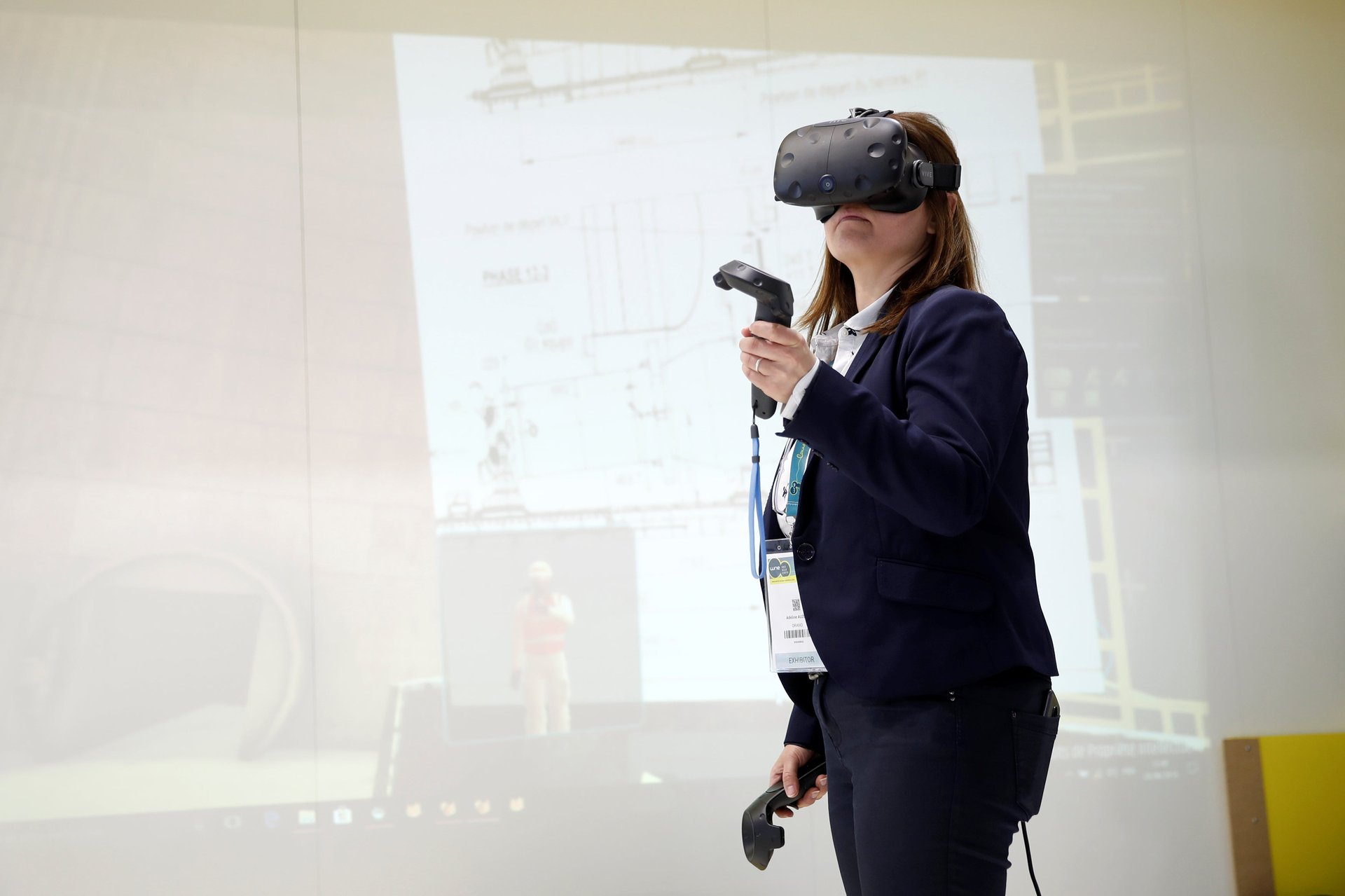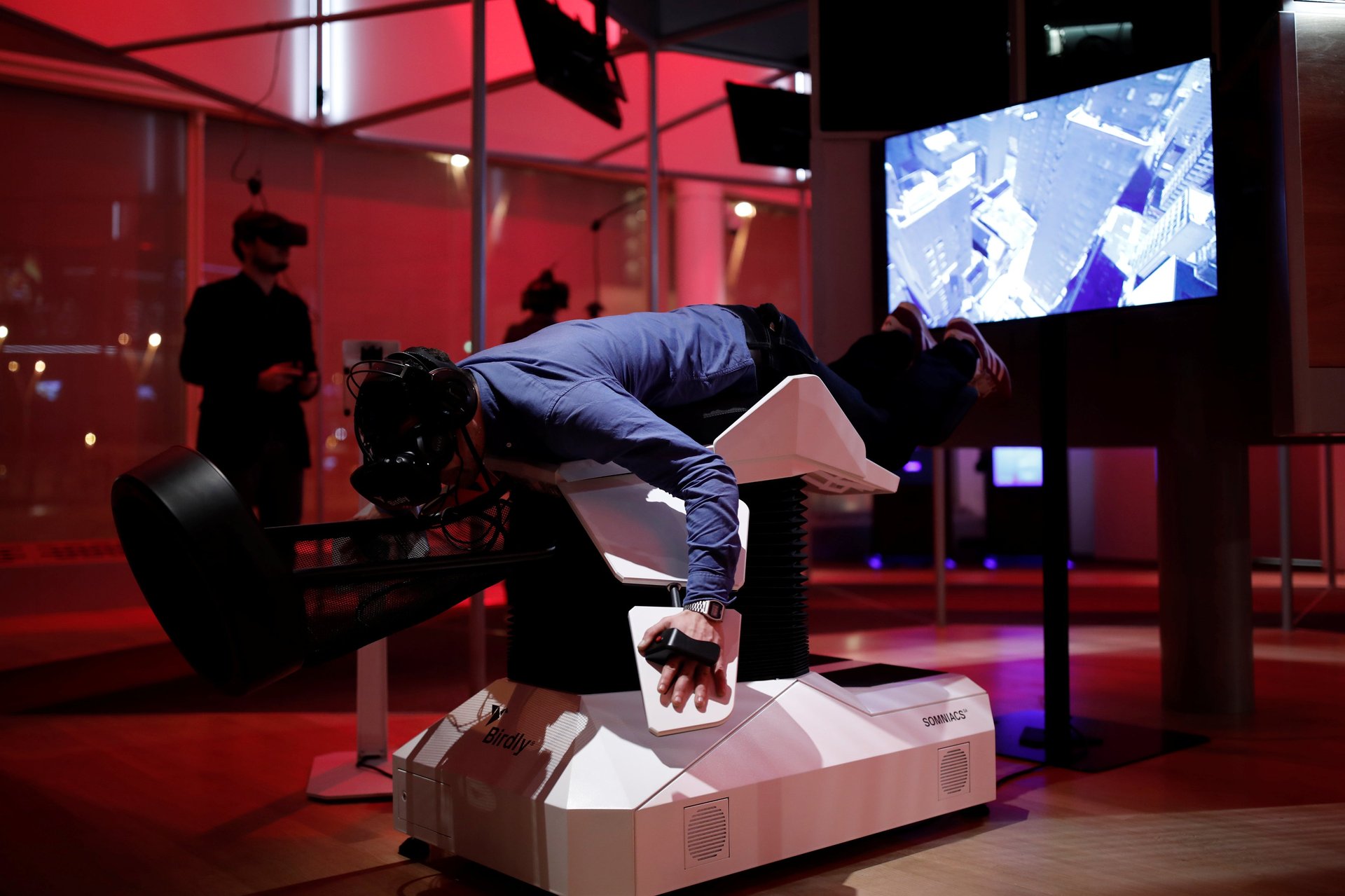We still don’t understand motion sickness, but it’s likely to get worse in the digital age
The word nausea comes from the Greek word naus, which means ship. And indeed, ever since humans figured out how to traverse the earth by boat—and then train, car, and plane—they’ve also had to contend with the nausea, vomiting, and queasiness that tends to afflict us when our bodies are in constant, jostling motion.


The word nausea comes from the Greek word naus, which means ship. And indeed, ever since humans figured out how to traverse the earth by boat—and then train, car, and plane—they’ve also had to contend with the nausea, vomiting, and queasiness that tends to afflict us when our bodies are in constant, jostling motion.
But just because it’s been around forever doesn’t mean we understand why it happens. Indeed despite years of research, nobody has definitively explained why being shaken around on a ship or while strapped into a car or airplane seat causes such digestive system distress. In a globalized world, with more people than ever traveling by air and ship, there’s plenty of motivation to get to the bottom of it. And it’s a problem Silicon Valley is applying itself to also, as motion sickness is acknowledged as a growing problem in virtual reality settings.
And yet it’s a question that still confounds scientists. As Lawrence Hettinger, a retired consultant who worked on systems theory for the US Navy, Army, and NASA put it: “What earthly purpose does that serve, to throw up in response to motion?”

“There’s a Nobel Prize in there for someone who figures that out,” says Dr. Thomas Stoffregen, a professor of kinesiology at the University of Minnesota and someone who has been studying the causes and effects of motion sickness for the bulk of his career. (He wanted to be an astronaut, but he ended up pondering why astronauts get sick instead.)
Stoffregen and some other researchers take issue with one of the most prominent theories of what causes motion sickness, which is probably one you’ve heard before: the neurotoxin response. The theory goes that being on a moving boat, car, or plane causes a sensory conflict. In other words, the way your body is moving and what your senses are observing the world don’t match what your body is used to on stable ground. This confusion of inputs upsets your vestibular system, which is the body’s internal balance system. Your body’s adaptive response to that confusion is to assume it’s being poisoned, and therefore to eject the contents of your stomach.
The theory dates back to a 1977 paper in the journal Science, and despite being believed widely, Stoffregen says it’s not only not been proven—it’s not testable. Stoffregen’s research points to another idea. It’s not sensory disruption that upsets our bodies, it’s postural imbalance—the way your body has to work a little harder to keep you upright and walking on a ship or plane.
This, he says, explains the fact that some people get sick and some people don’t—something that the poison adaptation theory doesn’t account for. His research has shown that “individual variations in the way people move their bodies naturally exist and are, in fact, related to who is susceptible to sickness and who is not.” The people on board a ship who “learn this changed pattern of motor control quickly will regain stable control of their body quickly. People who learn it slowly will be walking around in wobbly unstable manner.” The latter group’s shaky physical status—which also applies, albeit more subtly, in a seated position—is what makes them sick, Stroffregen’s theory goes.
But as for why this unstable posture triggers vomiting and nausea? Stoffregen doesn’t know: “Why doesn’t it give you a headache? Why doesn’t it make you tired? Or dizzy? I just plain don’t know.”

Hettinger—whose work involved trying to solve the sickness that occurred in flight simulators—agrees that the poison theory has little evidence to back it. But he notes that people who lack a vestibular system—something that can happen through disease—simply don’t get sick, indicating that there might be a multi-variate, context-dependent cause. “Postural disturbance does seem to come before getting sick,” Hettinger said, backing what Stoffregen’s research has found. But he notes, “This doesn’t mean that postural disturbance might not have its origin in some sort of disrupted sensory disruption. It’s probably not one or the other. It’s a very complex disorder.”
Research has shown that women and migraine sufferers are more likely to get motion sickness, and both Stoffregen and Hettinger say they come across people who either age out of their suffering, or all of a sudden develop motion sickness despite never having had it before. If you get sea sick in one context (a car), you’re more likely to get it in another (a boat), but not by much. Oh, and those unhelpful travel companions who tell you to relax because it’s “all in your head?” They are wrong—”fears and expectations can be a contributing factor, but they don’t cause anything,” Stoffregen says.
As technology evolves, motion sickness is a problem that’s likely to get worse, not better. Hettinger says that sizeable amounts of investment from companies like Oculus Rift have gone into figuring out not only how to reduce sickness while using virtual reality mounted headsets, but also the “perceptual after effects” that can affect your spatial judgment when emerging from a virtual world.
“It’s not just being moved,” Hettinger says. “It can happen in response to head motion just sitting there looking at a virtual environment.”
Meanwhile, Stoffregen’s research has also looked into the gender imbalance aspect, something he believes could lead to sexism down the road. If women are more affected by sickness caused by VR head mounted displays than men, than will they be left out of those environments entirely? That’s a big problem as VR becomes more widespread in work and other environments beyond gaming.
And technology aside, we’re still left with the ancient human problem: What can the sick seafarer do to feel better? Stoffregen says there is evidence that ginger candy and cookies can help settle the stomach of sick passengers (just don’t ask him why). Anti-histamines are only likely to work because the drowsiness they cause makes you put your head down and go to sleep—thereby removing the postural disturbance problem.
Your best bet, he says, is simply to close your eyes and stabilize your head on something.